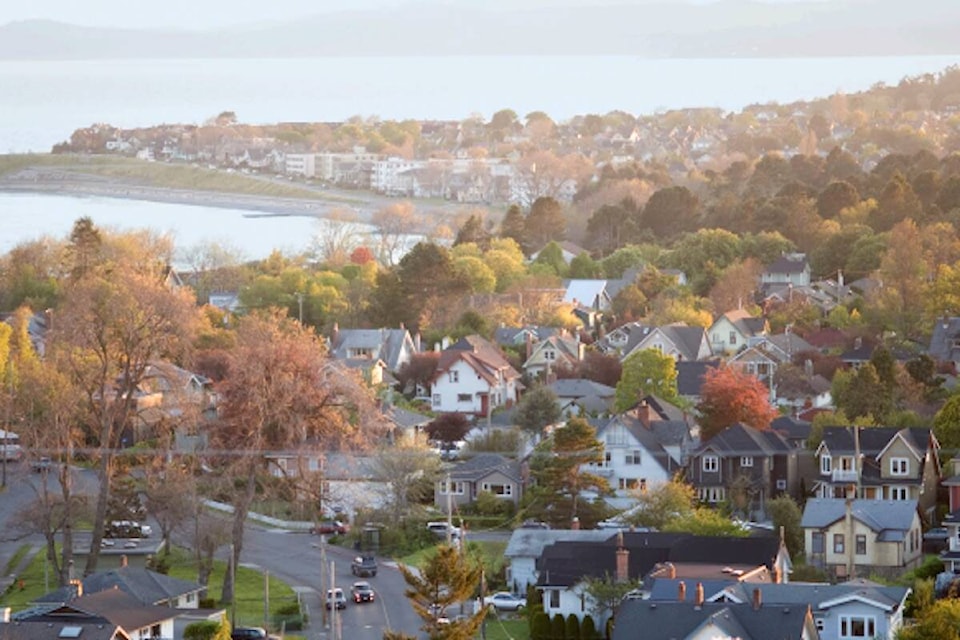Tanara Oliveira/Contributor
Each year the number of immigrants to Canada increases exponentially – and in Greater Victoria, this is key in dealing with a region that has one of the lowest birthrates in the country.
The region’s population grew by 8.2 per cent from 2017 to 2022, said a recent report by the Chartered Professional Accountants of British Columbia. Of the total increase in 2022, a majority arrived from other countries (net gain of 5,899 residents), followed by other provinces (3,667), and other parts of the province (1,319). However, the region’s population growth has also been hampered by low birth rates, with mortalities exceeding births by 1,419 in 2022.
With many reasons and dreams in their luggage, Canada is currently one of the most diverse and favorable immigration destinations for those in search of a better life.
Greater Victoria offers some excellent opportunities, according to those interviewed by Black Press Media.
Better career prospects, increased security, a higher standard of living and access to a free, top-notch educational system are just a few of the reasons some people choose here. Many of these newcomers, however, confront ongoing difficulties that frequently continue even after they are granted permanent residency. However, many of these immigrants face daily challenges that often do not end after they obtain permanent residence.
“One of the coolest opportunities I had here was when, a year and a half after I arrived, I was able to join a multinational company and work in my field there. This would be very difficult to happen in Brazil,” said Lucas Pitchon, who has lived here for the past three years. “Regarding the challenges, I consider quality of life as one of them. Quality of life is very much tied to the people you are with. Being alone is very different. You leave an environment with family and friends and all the convenience of having people helping you. Here everything is different. I share an apartment. I still don’t earn anywhere near what I want to earn. Besides, those who were born here, and had the opportunity to study here from an early age, have an easier time. I think this is one of the factors that make Canadians much easier to manage things than immigrants.”
Those immigrating from India, the top-ranked country for immigration, also face challenges when it comes to settling in Canada. Victoria’s Arjuna Sharma explained some ups and downs she’s faced.
“When I arrived, I faced a lot of discrimination and xenophobia, with people belittling me for my colour and background,” Sharma said. “I’ve had to deal with co-workers making jokes about my colour and associating it with dirt, as well as making fun of my accent. I am the only woman in a team of five and my knowledge is constantly put to the test simply because I was not born here or graduated from a university in the country.”
Where do newcomers come from?
In a recent report published by Immigration, Refugees, and Citizenship Canada (IRCC), it has been revealed that the dominant regions of origin for immigrants entering Canada in 2022 are Asia and Africa. The findings highlight a consistent pattern observed over time, indicating the ongoing significance of these two regions in shaping Canada’s immigrant population.
The IRCC data reveals the top-10 countries that contributed the most immigrants to Canada in 2022:
India: Leading the pack with 118,095 people.
China: Following closely with 31,815.
Afghanistan: With 23,735.
Nigeria: Contributing 22,085.
Philippines: Sending 22,070.
France: Contributing 14,145.
Pakistan: With 11,585.
Iran: Adding 11,105.
United States: Sending 10,400.
Syria: With 8,500.
Together, these 10 countries accounted for a substantial 62% of the total 436,000 permanent residents who chose Canada as their new home in 2022.
What are the biggest challenges and the biggest rewards?
Discrimination was also felt by Paula Duque, 38, who has lived in Greater Victoria for five years.
“I never took it personally,” said Duque. “Immigrating makes you realize that the problem is not always you and that we need to be more mature in understanding that we are doing our best and that should be enough.”
She came here in 2018 to do an English course. At the time, she met her husband – who came from Australia – and they both followed the path to citizenship through her husband’s IT job.
“I think one of the biggest challenges was the language barrier. And that includes my husband, who has English as his main language and also had to go through the same processes as me to immigrate.”
Despite the challenges, the desire to stay not only in the country, but also in Victoria, is evident.
“I can’t imagine going back to India,” said Sharma. “I prefer to deal with a little discrimination but have security and quality of life. It is not what others think of me or my race that will define me. There are so many nice people here, who have opened so many doors for me, that they won’t let me forget how lucky I am to have made this turn in my life. Canada is my home, and this is where I am building a better life for myself and my family.”
